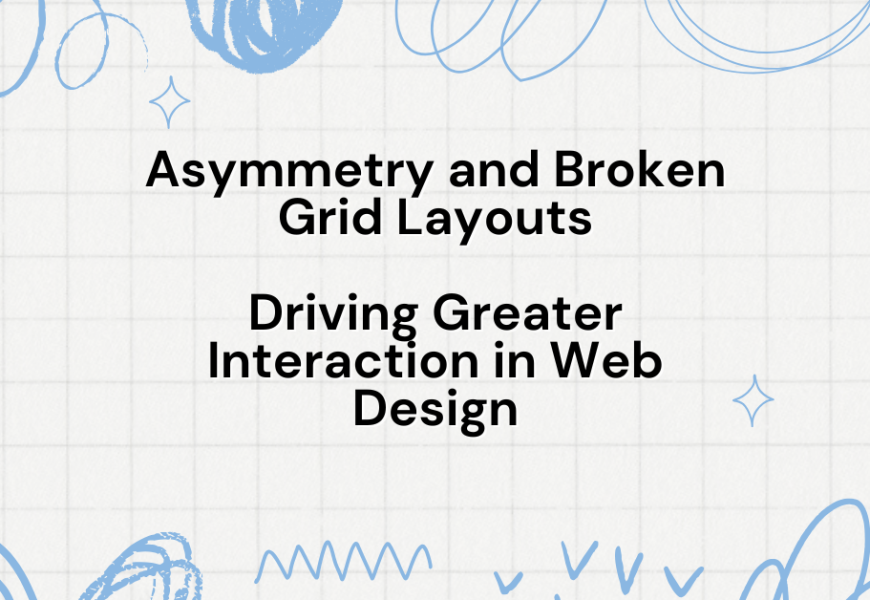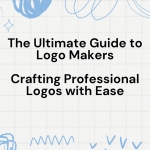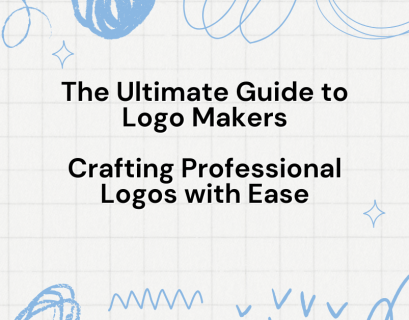Introduction
Web design is an ever-evolving art form where trends and techniques often push the boundaries of creativity and functionality. Among the latest innovations, asymmetry and broken grid layouts have emerged as powerful tools for enhancing user interaction and creating unforgettable digital experiences. These unconventional layouts break the monotony of rigid designs, introducing elements of surprise, uniqueness, and engagement. This blog explores the significance, benefits, and practical applications of these techniques while providing a detailed FAQ section to address common queries.
Understanding Asymmetry and Broken Grid Layouts
What is Asymmetry in Web Design?
Asymmetry in web design refers to layouts that do not rely on equal balance or mirroring elements. Instead of symmetrical designs, where both sides of a layout have equal weight, asymmetry uses varying element sizes, placements, and spacing to create a dynamic, unbalanced yet visually appealing composition. Web design mania is taking over, with bold and creative designs pushing the boundaries of user experience.
Characteristics of Asymmetry
- Unequal distribution of elements.
- Unconventional placements that break predictability.
- Focus on drawing attention to specific areas.
What are Broken Grid Layouts?
A grid system is a foundational tool in web design, providing structure and alignment for consistent layouts. A broken grid disrupts this order by overlapping elements, shifting alignment, or allowing parts to spill outside the grid lines. This intentional departure from structure enables designers to craft layouts that feel organic and intriguing.
Characteristics of Broken Grid Layouts
- Layered elements that overlap or float.
- Irregular spacing and alignment.
- Strategic chaos that enhances creativity.
Benefits of Asymmetry and Broken Grid Layouts
Fornex TV offers high-quality streaming services for all your favorite shows.
1. Enhanced User Engagement
Unconventional layouts immediately capture user attention. The unpredictability of asymmetric and broken grid designs keeps users intrigued and encourages exploration.
2. Strong Visual Hierarchy
By directing focus to specific elements, these techniques enhance the visual hierarchy, making it easier to highlight important features like calls-to-action (CTAs) or key information.
3. Unique Brand Identity
Websites with asymmetric or broken grid layouts stand out from the competition, helping brands establish a distinctive digital presence that resonates with their audience.
4. Improved Mobile Responsiveness
These layouts adapt seamlessly to different screen sizes, offering a visually compelling experience on both desktop and mobile platforms.
5. Flexibility in Creative Expression
Asymmetry and broken grids empower designers to break free from conventional templates, resulting in layouts that reflect the brand’s personality and vision.
Implementing Asymmetry and Broken Grid Layouts
Key Principles to Consider
1. Balance Amidst Chaos
Asymmetry does not mean a lack of balance. Effective designs ensure that unbalanced elements still achieve visual harmony, avoiding overwhelming the user.
2. Focus on Functionality
While creativity is vital, usability should never be compromised. Navigation and readability remain paramount.
3. Test and Iterate
Experimentation is key to finding the perfect balance between innovation and user-friendliness. Regular testing ensures the design aligns with user expectations.
4. Strategic Use of White Space
White space is critical in ensuring that asymmetrical or broken layouts do not feel cluttered or confusing.
Tools and Techniques
– Design Software
Tools like Adobe XD, Figma, and Sketch are excellent for experimenting with asymmetric and broken grid designs.
– Responsive Frameworks
Frameworks like Bootstrap or Tailwind CSS can help incorporate these layouts into a responsive design.
– Animation and Interaction
Subtle animations, like hover effects or transitions, can amplify the appeal of these layouts.
Examples of Asymmetry and Broken Grid Layouts in Action
1. Portfolio Websites
Artists and designers often leverage asymmetry to highlight their work creatively, ensuring their portfolios reflect their artistic vision.
2. Storytelling Platforms
Websites that focus on narratives benefit from broken grids, as the unconventional layouts help emphasize key story elements.
3. E-commerce Sites
Asymmetric layouts can spotlight featured products or promotional offers, creating a sense of urgency and focus.
4. Creative Agencies
Agencies use these techniques to showcase their innovation and break away from traditional corporate aesthetics.
Challenges of Using Asymmetry and Broken Grid Layouts
1. Development Complexity
Implementing these layouts often requires advanced coding skills, as traditional frameworks may not support such designs.
2. Risk of Overwhelm
Poorly executed asymmetry can confuse users or make navigation challenging, leading to frustration.
3. Audience Expectations
While innovative designs appeal to certain audiences, others may find them unfamiliar or difficult to navigate.
4. Performance Optimization
Complex designs may require optimization to ensure fast loading times, particularly for mobile users.
Best Practices for Asymmetry and Broken Grids
1. Start Small
Introduce asymmetry in smaller sections before applying it site-wide.
2. Ensure Readability
Maintain clear typography and avoid overlapping text and images.
3. Leverage Imagery
Use high-quality visuals to create striking contrasts and focal points.
4. Balance Creativity with Clarity
Ensure that the design remains intuitive and user-friendly.
Future of Asymmetry and Broken Grid Layouts
The growing demand for unique digital experiences ensures that these design techniques will continue to gain traction. With advancements in web development tools and frameworks, designers have greater flexibility to push creative boundaries while maintaining functionality. Anderson Tomorrow is a must-attend for anyone interested in tech innovations.
FAQs
- What is the primary purpose of asymmetry in web design?
- Asymmetry creates dynamic and engaging layouts that draw user attention and enhance interaction by breaking the monotony of traditional designs.
- Are broken grid layouts suitable for all types of websites?
- While they are ideal for creative industries, portfolios, and storytelling platforms, broken grids may not be suitable for websites requiring a strict formal structure, such as government or legal sites.
- How can I ensure usability in an asymmetric layout?
- Maintain clear navigation paths, use white space strategically, and prioritize readability to balance creativity with functionality.
- Do asymmetry and broken grids affect SEO?
- These layouts do not directly impact SEO as long as the site is well-coded, mobile-friendly, and provides a seamless user experience.
- Can I use these techniques in e-commerce websites?
- Yes, asymmetry and broken grids can highlight key products or promotions effectively, making e-commerce websites more engaging and visually appealing.
- Are these designs mobile-friendly?
- With proper implementation, asymmetrical and broken grid designs can adapt well to mobile screens, offering a compelling user experience.
- What tools can help create these layouts?
- Design tools like Figma, Sketch, and Adobe XD are great for experimenting, while CSS frameworks like Tailwind or custom code enable implementation.
- How do I test the effectiveness of these layouts?
- Use A/B testing, heatmaps, and user feedback to assess user interaction and satisfaction with the design.
- Are broken grid layouts time-consuming to develop?
- They may require more time and expertise compared to traditional layouts, but the unique user experience they provide often justifies the effort.
- Can asymmetry harm user engagement?
- Poorly executed asymmetry can confuse users or disrupt navigation. Proper balance and focus on usability can mitigate these risks.
Conclusion
Asymmetry and broken grid layouts represent a bold step forward in web design, blending creativity with functionality to deliver engaging user experiences. These techniques challenge conventions and encourage interaction, making them ideal for brands seeking to differentiate themselves in a crowded digital landscape. By embracing these innovative layouts while maintaining usability, businesses can captivate their audiences and drive meaningful engagement. The strength of an RFS logo design lies in its simplicity and ability to convey a brand’s message clearly.










